Kosava Castle (originally known as Puslowski Palace or the Palace of the Puslovskys) is a 19th century Gothic Revival residence. It is located in the small city of Kosava (also known as Kossovo) in the Brest Region of Belarus.
It was restored and reopened to the public in November 2017, meaning that many more people can enjoy its fabulous architecture up close, rather than squinting through a security fence.
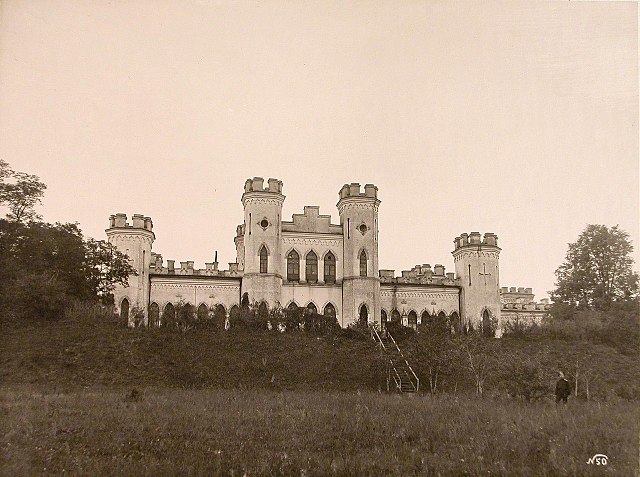
Near the castle is the museum of Andrzej Tadeusz Bonawentura Kościuszko, made as a replica of the house where he was born. He became a national hero in Poland, Lithuania, Belarus, and the United States as well as an honorary citizen of France.
A panoramic view of Kosava Castle can be enjoyed from the museum. Tourists from all over the world visit this house-museum which was restored and opened for public tours in 2004.
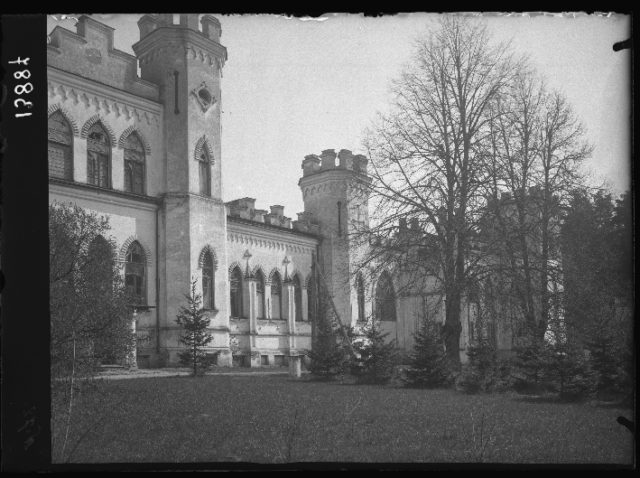
The town of Kosava was referred to for the first time in 1494 when the Grand Duke of Lithuania, Aleksandr Jagiellon, granted these lands to Yan Khreptovich, a high-ranking state official of the Grand Duchy of Lithuania.
For the next several centuries, the estate was owned by several important noble dynasties. Count Wojciech Puslowski bought the estate in 1821. There he founded a carpet-making factory and built or renovated more than 60 churches in the neighboring area.
The Puslowski family were very proud of being neighbors to the Mereczowszczyzna (Merechevschina) manor, the birthplace of the hero Tadeusz Kościuszko. In fact, the deserted Kościuszko estate was restored by the Puslowski family in 1857.
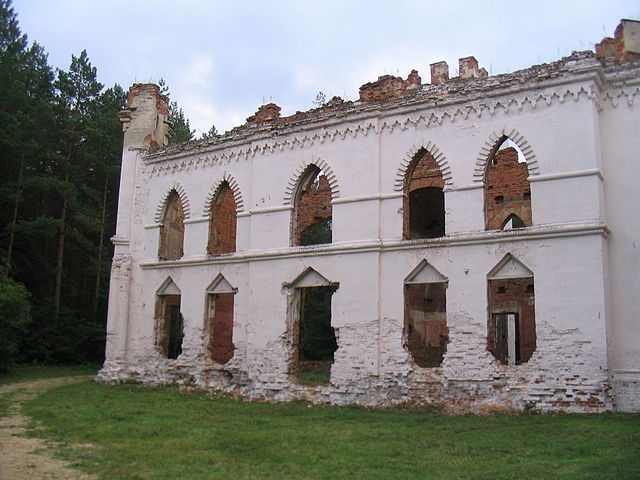
The palace is popularly called a castle, probably because of the medieval appearance of its towers in particular. Construction started in 1838 under the supervision of Count Wandalin Puslowski, whose father had purchased the property a few years earlier.
Wandalin Puslowski was an art lover, and his ideas were brought to life by the eminent architect Franciszek Jaszczołd, who made the first design of the building.
At the end of the 19th century, the palace was worked on by the architect Władysław Marconi, but many of the original ideas were retained, even though he added some of his own creativity to the place.
The palace was severely damaged by a fire a hundred years later during World War II.
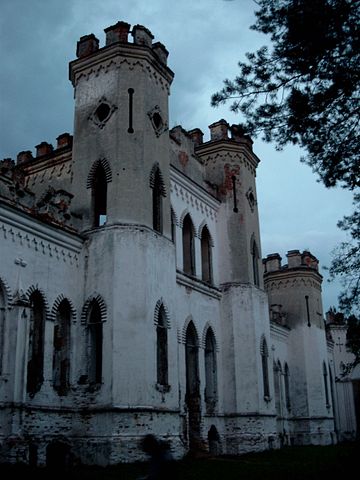
The palace has a comparatively unique layout with a central two-storied building and two wings. It has 132 rooms and 12 towers.
Each tower represents one month of the year and has rectangular merlons at the top. The central four towers are the highest and they symbolize the four bread months of the year, i.e. the period when the harvest is reaped: May, June, July, and August.
The system of corridors, the plan of the halls, and the precise location of the windows were designed to ensure that every year one of the rooms inside one particular tower was illuminated with sunlight for two and a half days. The residents of the palace celebrated the Day of the Room by decorating the interior and spending a lot of time in there.

The eccentricities of the Puslowski family did not end here. One of the legends claims that the ceremonial Central Parade Hall had a glass floor in the center with an aquarium installed underneath. Supposedly, exotic fish were kept in this unique fish tank, and it was the focal point of the extravagant balls that were once held here.
However, today’s restoration has not confirmed this legend, although it did reveal that the palace had an under-floor heating system.
There were three other magnificent halls: the White Hall which was designed for dancing and balls, the Black Hall that was used for card games, and the Pink Hall where people frequently played music.
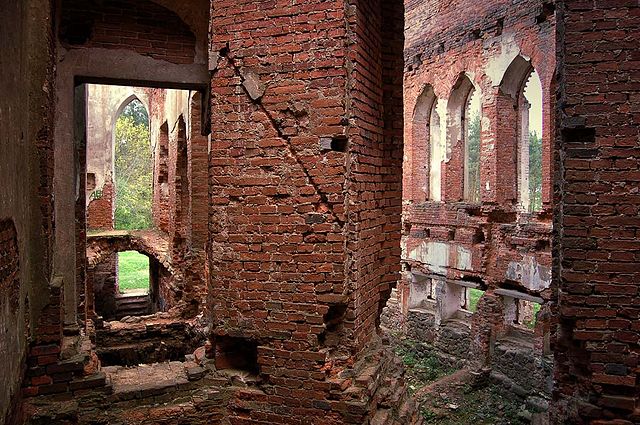
According to another local legend, the family had a lion who was released from its cage during the night hours in order to guard the palace. All the private rooms were locked for the night, and the lion would prowl the corridors and the central part of the palace, attacking intruders and eating them on the spot.
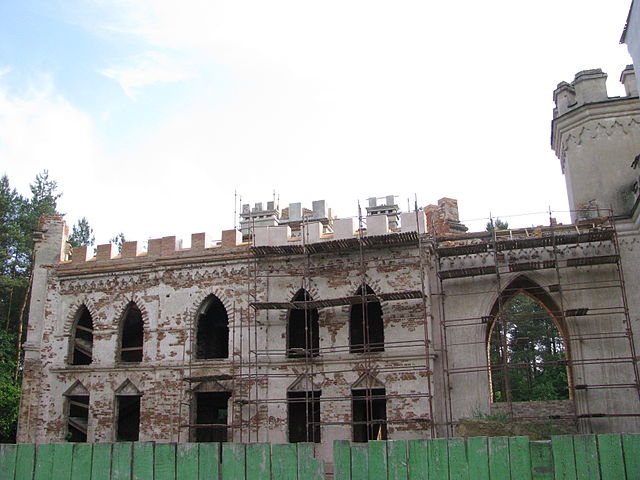
However, the most popular legend that surrounds Kosava Castle is that it had an underground tunnel 15.5 miles long constructed between the Puslowski estate and the residence of the noble Sapieha family in Ruzhany.
Rumor had it that the tunnel was wide enough for a carriage to pass through, and both families allegedly visited each other regularly using this passage. However, no physical evidence has yet been found to back up this legend.
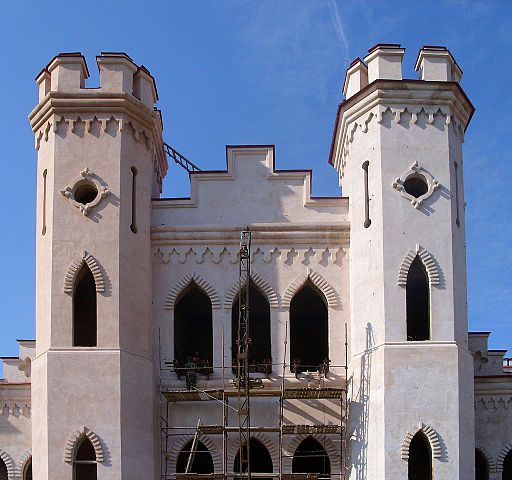
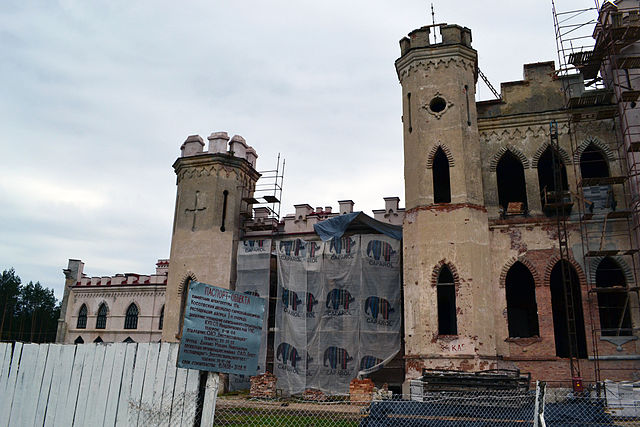
The Puslowski family lost their claim to the Kosava Castle when Leonard Puslowski, the builder’s grandson, gambled away the entire estate during a game of cards. In the next years, the palace changed owners several times.
After the failure of the Polish uprising against Russian rule in 1863 (known as the January Uprising), Kosava Castle was transferred to the Trubetskoy family and, later, to several other Russian aristocratic families.
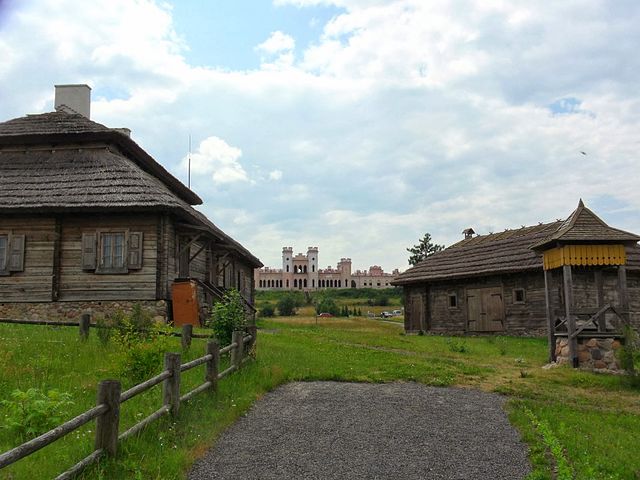
During World War I, the palace was plundered several times and its valuables were taken away. However, although partly damaged, the building was still in good shape so in 1921 a district administration office and a beekeeper school were opened here. During World War II, the palace suffered the worst damage.
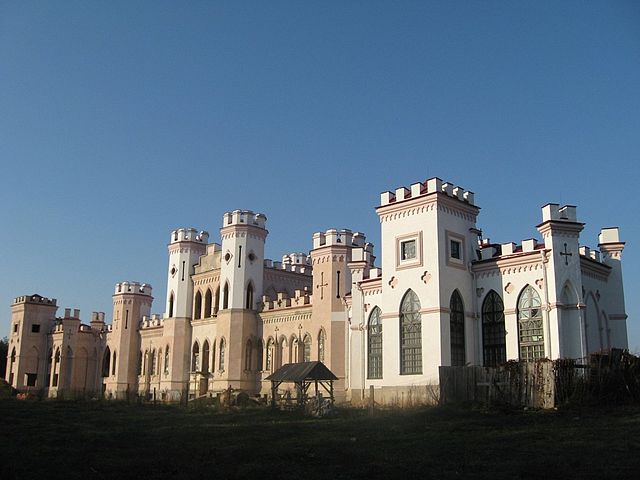
For many days in 1944, a fire blazed through its rooms, destroying the decoration of the halls and leaving only the magnificent shell of the building. Some claimed that the fire was started accidentally by careless German soldiers, while others believed that partisans burned it in an attempt to kill the Germans sleeping inside.
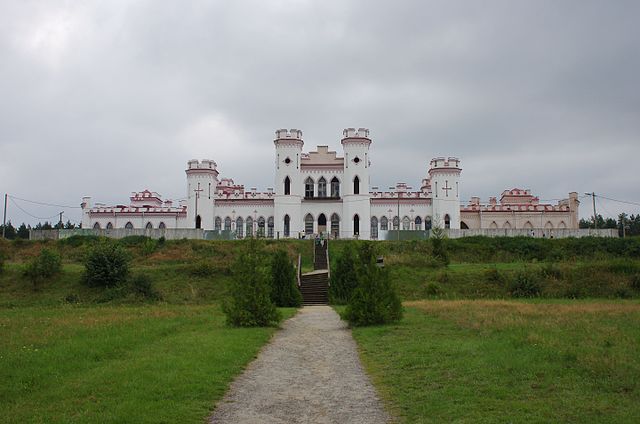
In its prime, the palace was encircled by a beautiful park with more than 150 species of exotic plants. A greenhouse was constructed for the most unique of them. The terraces of the park led down to three artificial lakes and the Kościuszko estate.
Another Article From Us: Derelict Château de Noisy
There are plans in the near future for the terraced park to be restored to its original state since it is one of the biggest parks of this type in Belarus.
